Fall 2012 NIDDK Director's Update

 Diseases don’t care about national borders, and neither do treatments or cures. The U.S., India, and China, among other countries, have seen increasing rates of type 2 diabetes. Just as African Americans of sub-Saharan descent face disproportionally high rates of kidney disease, so too do counterparts in ancestral lands.
Diseases don’t care about national borders, and neither do treatments or cures. The U.S., India, and China, among other countries, have seen increasing rates of type 2 diabetes. Just as African Americans of sub-Saharan descent face disproportionally high rates of kidney disease, so too do counterparts in ancestral lands.
And so the National Institute of Diabetes and Digestive and Kidney Diseases has forged international relationships to accelerate research to find clues, treatments and cures that can help everyone. In July, the U.S. and India signed a joint statement to support diabetes research collaborations, as you can read more about in this issue. As well, in 2011 a delegation of Chinese health officials visited the NIDDK’s Metabolic Clinical Research Unit to learn about our work on obesity and metabolism.
Oftentimes, pooling scientific knowledge and resources can be the most economical, efficient way to make health discoveries. As part of the Human Health and Heredity in Africa initiative (or H3Africa), funded through NIH and others, NIDDK will be sharing its expertise in kidney disease with researchers from five other countries on a large-scale study to better understand why chronic kidney disease is so prevalent in sub-Saharan Africa.
In this project, the primary investigator is from the University of Ghana. His collaborators are from the U.S., Canada, Ethiopia, Nigeria, and South Africa. The African sites will work to recruit about 8,000 patients with kidney disease. The U.S. and Canadian sites will help with genetic analyses, and a U.S. site will provide training. Working together, the results may have a greater impact on public health than any of the teams could achieve alone.
While we collaborate on research, we also share what we’ve learned in ways that can reach people of many languages, both in the U.S. and abroad. The National Diabetes Education Program has copyright-free materials in 19 languages. The National Kidney Disease Education Program has been expanding its outreach to Spanish speakers through radio appearances and materials targeting a Hispanic population – which has a disproportionate amount of kidney disease. You can read more about NKDEP’s efforts in this issue.
As we work together with goodwill to strengthen our mutual health, we may also find a corollary benefit: strengthening our international relationships.
In good health,

Griffin P. Rodgers, M.D., M.A.C.P.
Director, National Institute of Diabetes and Digestive and Kidney Diseases
Dr. Yongxiang Lu (second from r), vice-chairman of China’s National People’s Congress standing committee and former head of China’s national academy of sciences, and other senior Chinese officials met with NIDDK director Dr. Griffin Rodgers (second from l) and his staff in 2011 to discuss common research interests in diabetes and obesity and to tour NIH’s Metabolic Clinical Research Unit.
U.S., India sign joint statement to collaborate in diabetes research
 On June 12, 2012, U.S. Health and Human Services Secretary Kathleen Sebelius and India’s Health and Family Welfare Minister Ghulam Nabi Azad signed a joint statement to begin a formal research relationship between the National Institutes of Health and the Indian Council of Medical Research to accelerate efforts to better understand the mechanisms underlying diabetes, and to identify innovative solutions to prevent and treat the disease.
On June 12, 2012, U.S. Health and Human Services Secretary Kathleen Sebelius and India’s Health and Family Welfare Minister Ghulam Nabi Azad signed a joint statement to begin a formal research relationship between the National Institutes of Health and the Indian Council of Medical Research to accelerate efforts to better understand the mechanisms underlying diabetes, and to identify innovative solutions to prevent and treat the disease.
About 26 million Americans have diabetes, and in India the burden may be at least twice that. Both countries share this public health problem and both countries already conduct substantial research, including examining lifestyle interventions and metformin to prevent diabetes. The joint statement provides greater opportunities for collaborative projects ranging from research to identify genes for diabetes to bettering public health efforts to manage and treat diabetes.
“Both the United States and India have a vested interest in improving our understanding of and treatment for diabetes, and in finding economical ways to do both,” said Dr. Griffin P. Rodgers, director of the NIH’s National Institute of Diabetes and Digestive and Kidney Diseases, which will lead the U.S. role in the collaboration. “Initiating this research relationship will enable both countries to share expertise and engage each other in research to lessen the burden of diabetes – in the U.S., India, and around the world.”
One potential area of collaboration may be in studying why people of South Asian origin develop diabetes at a lower body mass index and waist circumference than people of other ethnic origins – a question of interest to both India and the U.S., with its large South Asian population. A first step in partnering will be a scientific meeting in early 2013.
HHS Secretary Kathleen Sebelius (c) and India’s Ghulam Nabi Azad (second from r), minister of health and family welfare, recently signed a joint statement on collaboration on diabetes research. They were witnessed by NIDDK director Dr. Griffin Rodgers (l), Dr. V.M. Katoch (second from l), secretary of India’s department of health research and director-general, Indian Council of Medical Research, and Krishna Tirath (r), India’s minister of state for women and child development. The signing took place at the Hubert H. Humphrey Bldg. in Washington, D.C.
Photo credit: Chris Smith/HHS
NIDDK steps up social media use to reach wider audience
By Anne Wright
 The NIDDK is connecting with a wider audience in real time using social and new media to boost direct and collaborative communication, promote ideas and resource sharing, and increase transparency and accountability.
The NIDDK is connecting with a wider audience in real time using social and new media to boost direct and collaborative communication, promote ideas and resource sharing, and increase transparency and accountability.
Different groups within NIDDK use social and new media to achieve different goals, according to NIDDK Public Health Advisor Dana Sheets, the institute’s social and new media point person. “For example, communications staff overseeing our awareness campaigns and education programs use social media to promote NIDDK health resources, news and other information. And other staff use it to facilitate research discussions among virtual communities of scientists.”
The NIDDK Clearinghouses and the Weight-control Information Network have Facebook pages promoting NIDDK health messages. Both the National Diabetes Education Program (NDEP) and National Kidney Disease Education Program (NKDEP) have been successfully leveraging Facebook and Twitter to broaden the reach of their national education and awareness campaign messages. In February all NIDDK social media accounts, including the newly launched @HealthyMoments on Twitter, began posting highlights of NIDDK Director Dr. Griffin P. Rodgers’ Healthy Moments radio show, extending his weekly health tips to an even larger audience.
In addition, NIDDK is tapping another social media tool, IdeaScale, to cultivate virtual communities of people interested in the Institute’s research activities. The interactive, web-based Kidney Research National Dialogue (KRND), for example, draws input from scientists, clinicians and the lay public in identifying kidney disease research opportunities and critical issues. Nearly 250 contributors have posted, commented, or voted on a variety of topics, and NIDDK is using the input and the technology to develop a strategic plan for the Division of Kidney, Urologic, and Hematologic Diseases (KUH).
The dialogue now includes contributors from every continent but Antarctica, according to NIDDK Program Director Dr. Krystyna Rys-Sikora, who developed the site with an NIDDK working group.
Another effort within KUH is HEME-NET, an evolving virtual community for researchers of nonmalignant hematologic diseases. The program is headed by Drs. Terry Bishop and Daniel Wright, with Rys-Sikora overseeing technical development of the site. “We have been trying to nurture this community, so HEME-NET is a way for these researchers to join together and have a place on the web to promote their research, share reagents and network with each other,” said Rys-Sikora.
Though Heme-Net is up and running, it is still in development, along with another fledgling site – a new Facebook page for KUH career development, or “K,” award recipients. “We want to create a space specifically for young people in the KUH portfolio who are all in the same place and facing the same kind of issues,” said NIDDK Program Director Dr. Tracy Rankin. The site, slated to go live in September, will answer typical new awardee questions about funding opportunities, deadlines, scoring and related topics.
NIDDK has also supported a social media campaign to promote “Weight of the Nation” and projects stemming from the Emmy-nominated HBO documentary series. Together with the NIH Office of the Director and other institutes involved in the HBO project, NIDDK used tweets and Facebook posts from an NIH-focused social media toolkit. The successful social media campaign helped draw more than 1 million people to view “The Weight of the Nation” trailer on YouTube.
In May, NIDDK finalized a social and new media policy to cover professional and personal use of Facebook, Twitter, IdeaScale and other web tools. “We’re excited about the opportunities that social and new media represent,” said Sheets. “And we need to be thoughtful in how we develop our presence so that it’s effective and sustainable.”
Clinic opens to aid in research to benefit American Indian populations
By Amy F. Reiter
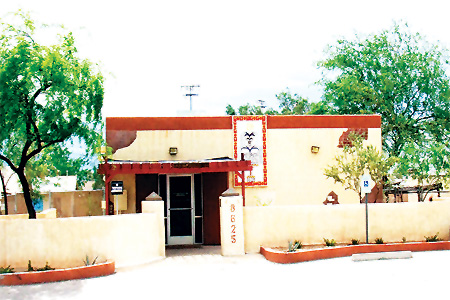 On a dusty road just south of Phoenix, a small one-story building has just completed its first year open for research. The building sits along the Avenida del Yaqui, the main road of Guadalupe, a town made up of primarily Yaqui Indians and Hispanic Americans.
On a dusty road just south of Phoenix, a small one-story building has just completed its first year open for research. The building sits along the Avenida del Yaqui, the main road of Guadalupe, a town made up of primarily Yaqui Indians and Hispanic Americans.
The facility, called the NIH Research Clinic, opened in the summer of 2011 with the goal of helping understand and lessen health disparities in obesity, type 2 diabetes, and the complications of diabetes, including blindness, amputations, and kidney failure in Native Americans. NIDDK researchers from the intramural Phoenix Epidemiology and Clinical Research Branch (PECRB) hope that participation in clinical research by people from Guadalupe and surrounding communities will help make this goal achievable.
“Guadalupe is very accessible for members of the Yaqui tribe as well as for other Native Americans living in the greater Phoenix area,” said Dr. Jennifer Weil of PECRB. “Guadalupe is a town near Phoenix, where many members of the Pascua Yaqui tribe reside. We know that the burden of type 2 diabetes is great in that community as well as in other Native American communities in and near Phoenix.”
The facility’s planning had been in progress for two years prior to opening, ever since the building housing a former free clinic on the town’s main road became available. Guadalupe’s location and population were both draws. The Yaqui who first settled in the town were from Sonora, Mexico, and descendants have preserved many elements of their culture, including elaborate Easter and Lent ceremonies with dancing, costumes, music and masks.
The close-knit community may enable better research. “We are conducting the Family Investigation of Nephropathy in Diabetes (FIND) to determine genetic factors that contribute to diabetic kidney disease,” said Dr. Robert Nelson of PECRB. “In this protocol, we try to see many members of each family. The Guadalupe research clinic has enabled us to get to know whole households.”
Dr. Bill Knowler of PECRB said that the facility may begin adding studies. “We would like to expand our research there to other protocols, including our longitudinal study of obesity, impaired glucose regulation, type 2 diabetes, and complications of diabetes,” he said. “We hope to get to know more members of the Guadalupe community as they come in to participate in our studies.”
While the clinic is nearby for many Yaqui people, said Dr. Jeff Curtis of PECRB, “our studies are open to all Native Americans in both of our current research clinic locations, Guadalupe and at the NIH Building on the grounds of the Phoenix Indian Medical Center.”
For more information on the clinic or PECRB research, go to www2.niddk.nih.gov/NIDDKLabs/AllLabs/Branches/PhoenixEpidemiologyandClinicalResearchBranch.htm.
Rural students soar with Aspirnaut science programs
By Amy F. Reiter
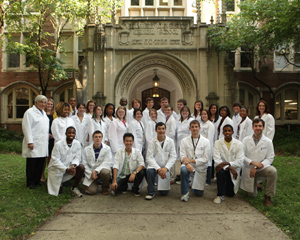 Brilliant minds can come from hard-to-reach places. That’s the thinking behind Aspirnaut, an NIDDK-supported program that encourages students from rural areas to learn about STEM fields – science, technology, engineering and math – in the hopes of sparking careers.
Brilliant minds can come from hard-to-reach places. That’s the thinking behind Aspirnaut, an NIDDK-supported program that encourages students from rural areas to learn about STEM fields – science, technology, engineering and math – in the hopes of sparking careers.
It worked for Cody Stothers. The Vanderbilt University junior began his Aspirnaut (www.aspirnaut.org ) experience as a high school summer researcher at Vanderbilt. After his summer, he went home to Sheridan, Ark., where he served as a conduit between Aspirnaut and local middle and high schoolers. Stothers helped conduct science lab classes between Vanderbilt professors and rural students and teachers via videoconference and supported activities on a “Magic School Bus,” where academically gifted students were given computers and Internet access to do enrichment activities during their sometimes hour-and-a-half rides to and from school – just two facets of the Aspirnaut program.
) experience as a high school summer researcher at Vanderbilt. After his summer, he went home to Sheridan, Ark., where he served as a conduit between Aspirnaut and local middle and high schoolers. Stothers helped conduct science lab classes between Vanderbilt professors and rural students and teachers via videoconference and supported activities on a “Magic School Bus,” where academically gifted students were given computers and Internet access to do enrichment activities during their sometimes hour-and-a-half rides to and from school – just two facets of the Aspirnaut program.
“Prior to the Aspirnaut program, prior to college, I was not planning to be a scientist. (Both) helped me solidify in my mind that it would be a rewarding career for me,” Stothers said.
The program, begun by Dr. Billy Hudson – himself a product of a rural upbringing and now the Elliot V. Newman Professor of Medicine, Pathology, and Biochemistry at Vanderbilt – is partly supported by NIDDK grants. The funding supports high school and college summer research experiences for students from rural areas or otherwise underrepresented groups. The students enter high school from elementary and middle schools that, in many cases, do not have science labs, Hudson said. “Teachers are under-resourced and often lack science training.”
In the program, Hudson said, students are exposed to scientists – including many from rural or disadvantaged backgrounds – and expected to learn and contribute. “When they return (to their community), they can dream and see the possibility that this way of life can include them,” Hudson said. “We’re shining the light out there, showing them a pathway to success.”
NIDDK originally began supporting the initiative in 2009 when Hudson successfully applied for an ARRA supplement through NIDDK to support the summer program for high school and undergraduates. Dr. Hudson and his colleagues have been able to leverage this stimulus to a successful NIDDK AREA grant – a grant for undergraduate or underserved institutions – to Tennessee State University, and an NIDDK R25 education grant to Vanderbilt University. Other students have been supported by the NIDDK Short-Term Education Program for Underrepresented Persons. “NIDDK is front and center in helping us (develop) this model,” Hudson said.
In addition, this year American Indian high school summer interns were supported in part by a Native American Research Centers for Health grant from NIH and the Indian Health Service.
Dr. Tracy Rankin, NIDDK Career Development and Training Program Director of Kidney and Urologic Diseases, said the Aspirnaut program fits an immediate need for “more undergraduates choosing to pursue basic research in our mission areas, including nephrology. There has been a dearth of interest in nephrology, so we, in conversation with the American Society of Nephrology, have tried to brainstorm how to recruit more individuals to this area. The consensus is that the earlier we target, the better.”
Geoff Hunt, the public outreach coordinator for the American Society for Biochemistry and Molecular Biology, which is also supporting Aspirnaut’s efforts, agreed. “In a world where scientific knowledge and training are requisites for maintaining our nation’s competitive and technological edge, exposing students to science at an early age is critical,” he said. “The Aspirnaut initiative provides a wonderful example of how organic, grass-roots efforts can supplement traditional classroom science education and inspire the next generation of scientists.”
Several hundred students have taken part in some element of Aspirnaut, with many more to come. Aspirnaut co-founder and Vanderbilt Assistant Vice Chancellor for Health Affairs Dr. Julie Hudson – also a pediatric anesthesiologist married to Dr. Billy Hudson – points to the numbers for results of the program’s success.
“At least one in two students state that the Aspirnaut program has impacted … their course choices and career goals,” she wrote in an e-mail. Of the students who participated in high school summer internships, all but one who’ve since graduated have continued to college, and 25 of 27 of them have chosen STEM-related studies.
Stothers is among them. Three years after his first Aspirnaut experience, he has now been accepted early to Vanderbilt’s medical school and gives much credit to the program for his success. “I don’t know how I would have figured out any of this stuff otherwise,” he said. Programs like Aspirnaut “may even be essential to these small communities.”
Photo caption: Vanderbilt University’s 2012 Aspirnaut Summer Research high school, undergraduate and graduate student interns stand with Aspirnaut staff.
Photo credit: Anne Raynor
Funding begins for Centers for Diabetes Translation Research
By Amy F. Reiter
Knowledge is most powerful when shared. That’s the premise behind the newly funded Centers for Diabetes Translation Research (CDTR), which have the goal of providing expertise and support to help translate research knowledge of how to help prevent type 2 diabetes and improve diabetes outcomes into outreach strategies that can be widely and successfully implemented.
Through seven centers around the country, focus will be on diverse skills and expertise that can be shared with researchers planning to test how to help people make long-term positive changes for their health.
The idea for the centers arose because, despite much evidence on how to prevent type 2 diabetes and treat all forms of the disease, there is considerable room to improve on getting that care to the people who need it most. The Centers' grants began funding in September 2011.
“We have interventions that work,” said Dr. Christine Hunter, NIDDK Division of Diabetes, Endocrinology, and Metabolic Diseases. “We want to make sure they’re effectively put into practice.”
Intersecting science and public health, the centers will work to develop and channel expertise into “cores” of knowledge to enhance the efficiency and effectiveness of diabetes translation research. Areas of core expertise include community engagement, health information, technology, analysis and measurement related to translational science. Centers may also assist researchers outside the parent institution with training, statistical analysis, technology, and other areas.
“The Center for American Indian and Alaska Native Diabetes Translational Research, located in the Colorado School of Public Health, serves as a resource for investigators, communities and others to more effectively translate state-of-the-art diabetes prevention and management research to the benefit of American Indians and Alaska Natives,” said Dr. Spero M. Manson, distinguished professor and director of the Colorado program. “We look to the Center’s National Resource Core to facilitate a much wider dissemination and implementation of diabetes prevention and management approaches than could be envisioned otherwise.”
With the request for applications, NIDDK’s goal was to "fund centers with expertise in different high-need populations,” Hunter said, adding that the funded centers are poised to meet that goal. The expertise in these centers is diverse and focused on many high-risk communities including African-Americans, Latinos or American Indians. The centers also have expertise related to children, family and pregnancy.
Indicators of success include publications that improve practice and interventions that are cost-effective and doable, with real improvements in health and quality of life.
“We want to make sure that what we know about how best to prevent type 2 diabetes and manage diabetes is widely available to, accessible for, and in use by the people who need it,” Hunter said. “These centers provide a foundation of expertise to accelerate our achievement of this goal.”
Diverse students explore research through NIDDK summer programs
By Krysten Carrera
 On the surface, Camille Miller and Yvonne Johnny appear to have little in common. Camille is an American Indian, lives in the dusty deserts of Arizona, and is enrolled in college to be a registered nurse. Yvonne hails from the tropical paradise of the Federated States of Micronesia (FSM), a U.S.-affiliated territory, more than 5,000 miles away. She hopes to pursue science education when she graduates from high school. But both young women share important similarities: each of their communities suffers from unusually high rates of diabetes and its complications. And each student spent the past few months looking for a way to change that.
On the surface, Camille Miller and Yvonne Johnny appear to have little in common. Camille is an American Indian, lives in the dusty deserts of Arizona, and is enrolled in college to be a registered nurse. Yvonne hails from the tropical paradise of the Federated States of Micronesia (FSM), a U.S.-affiliated territory, more than 5,000 miles away. She hopes to pursue science education when she graduates from high school. But both young women share important similarities: each of their communities suffers from unusually high rates of diabetes and its complications. And each student spent the past few months looking for a way to change that.
This summer, Camille and Yvonne both participated in NIDDK programs designed to diversify the biomedical research field. Camille studied type 2 diabetes through the NIDDK Summer Internship Program (SIP) at the institute’s Phoenix Epidemiology and Clinical Research Branch (PECRB). Yvonne researched type 2 diabetes through the Short-Term Education Program for Underrepresented Persons (STEP-UP) in her native Micronesia. Both presented their research at conferences on the NIH campus in August.
The two programs are designed to provide research opportunities for students from groups underrepresented in biomedical research – including certain racial and ethnic minorities. NIDDK SIP students conduct research related to NIDDK’s mission either at a lab on the main NIH campus or at PECRB, and STEP-UP students work at one of several NIDDK-funded labs in the United States and its territories. This year, STEP-UP welcomed students from the Marshall Islands, the FSM, and U.S. Virgin Islands for the first time, and NIDDK established a new molecular biology lab in the Marshall Islands.
Dr. Lawrence Agodoa directs NIDDK’s Office of Minority Health Research Coordination, which manages both programs. He said having a diverse pool of researchers to tackle some of science’s most pressing issues is crucial.
“People of all walks of life need to come together and think about how to solve these problems,” Agodoa said. “Many chronic diseases such as diabetes affect minority communities disproportionately. Having friends and family who are affected by a disease often gives people extra motivation to pursue biomedical research.”
Camille and Yvonne concur. Part of Camille’s passion for her research on type 2 diabetes in Pima Indians comes from having experienced the disease within her own American Indian community, the Cocopah tribe, and even closer to home.
“Diabetes runs in my family, and my grandparents were amputees from diabetes complications. They ended up dying from diabetes. I really think that my family and tribal members could benefit from my research,” she said.
The research that Camille conducted this summer at PECRB was her first foray into the world of biomedical research, and she hopes to apply for an NIH grant one day to resume her investigations.
Yvonne also hopes to continue her research.
“I want to find a cure for diabetes to help my family and friends back home,” she said. “I see myself as the future of diabetes research.”
Learn more about the NIDDK Office of Minority Health Research Coordination summer programs at www2.niddk.nih.gov/OMHRC/OMHRCHome/OMHRCHome.htm.
NIH-funded study finds more precise way to estimate kidney function: Measuring creatinine and cystatin C — two markers for chronic kidney disease (CKD) — more precisely estimates kidney function than either marker alone. Results appear in the July 5 issue of the New England Journal of Medicine. www.nih.gov/news/health/jul2012/niddk-05.htm
Weight-loss surgery increases alcohol use disorders over time: Adults who had a common bariatric surgery to lose weight had a significantly higher risk of alcohol use disorders (AUD) two years after surgery, according to a study by an NIH research consortium. Study results were posted on the Journal of the American Medical Association's website on June 18 and appear in JAMA's June 20, 2012, print issue. www.nih.gov/news/health/jun2012/niddk-18.htm
Heart disease and stroke deaths drop significantly for people with diabetes: Healthier lifestyles, better disease management are helping people live longer: Death rates for people with diabetes dropped substantially from 1997 to 2006, especially deaths related to heart disease and stroke, according to researchers at the Centers for Disease Control and Prevention and NIH. Deaths from all causes declined by 23 percent, and deaths related to heart disease and stroke dropped by 40 percent, according to the study published today in the journal Diabetes Care (http://care.diabetesjournals.org/content/35/6/1252.full) . www.cdc.gov/media/releases/2012/p0522_heart_disease.html
. www.cdc.gov/media/releases/2012/p0522_heart_disease.html

NKDEP increases outreach to Hispanics with new website, media campaign 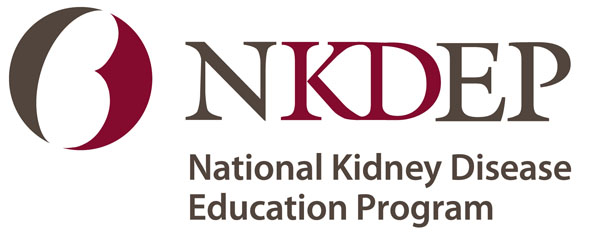
Word is spreading about the National Kidney Disease Education Program’s (NKDEP) new Spanish website, thanks to a successful outreach campaign targeting Hispanic television, radio and online media.
Media outlets including CNN en Español, Univisión, Blogger Outreach and AARP’s Spanish radio show have aired interviews in Spanish with NKDEP Director Dr. Andrew Narva, NKDEP coordinating panel members and NIDDK grantees, all serving as NKDEP spokespeople. The outlets reach millions of Latinos from the United States and Latin and South America.
As a result, website traffic and web visitor engagement from Hispanics in these areas have increased substantially. For instance, the number of visitors to the website increased 125 percent – from 1,039 visits on May 28, 2012, to 2,338 visits on June 4, the day an interview aired on CNN with NKDEP Coordinating Panel Member Dr. Sylvia Rosas, assistant professor of medicine at the University of Pennsylvania. Traffic to the Spanish resources page increased by 200 percent over the week when Narva was interviewed for Huffpost Voces, a recently launched Spanish website from AOL Latino and Huffington Post. Media interviews have focused on the causes, symptoms, risk factors, and treatment of kidney disease, as well as prevention, disease management and the new website.
"The great interest from the media reflects the need for more health information in Spanish,” said Narva. “We were very surprised to see how little is available for the public in Spanish about kidney disease."
Hispanic adults are at higher risk for kidney disease than non-Hispanic white adults largely because they are twice as likely to be diagnosed with diabetes, a leading risk factor for kidney disease.
NKDEP launched its Spanish website, part of an overall website overhaul, in March. The site offers information about prevention, nutrition, testing, medication and treatment options, as well as educational videos and contact information for submitting questions in Spanish.
For more information about the website, www.nkdep.nih.gov/inicio.shtml, or the media campaign, contact NKDEP at nkdep@info.niddk.nih.gov.
NDEP celebrates 15 years: Changing the way diabetes is treated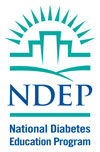
Fifteen years ago, the federal government launched the National Diabetes Education Program (NDEP), a comprehensive public education program to address the emerging epidemic of diabetes. NIDDK and the Centers for Disease Control and Prevention joined forces and resources to create and sustain a partnership dedicated to reducing the devastating effects of diabetes.
Since that time, the NDEP has forged a partnership that includes state and local health departments, professional societies representing the full gamut of health care disciplines, community-based organizations that serve populations most affected by diabetes, and key federal agencies that deliver or pay for health care, including the Centers for Medicare & Medicaid Services, the Indian Health Service, and the U.S Department of Veterans Affairs.
Fifteen years later, NDEP has made great progress in achieving its goal of changing the way diabetes is treated. Although the prevalence of diabetes has continued to rise due to the obesity epidemic, the aging of the U.S. population, and increasing numbers of people at high risk for diabetes, there are strong, encouraging indicators that the diabetes community, coalesced and empowered by the NDEP, is making a difference in preventing and treating diabetes.
What has made NDEP unique and enduring over the past 15 years is its robust Partnership Network, which represents a varied and diverse group of organizations and individuals on the front lines of diabetes prevention and management.
Visit NDEP's 15th anniversary webpage at www.YourDiabetesInfo.org/15. This webpage will be updated throughout the year with NDEP highlights over the past 15 years — showcasing partner accomplishments and testimonials.
Planning and Grant Resources
NIDDK website shows funding trends and support of core values
NIDDK’s core values emphasize maintaining a strong investigator initiated R01 program, preserving a stable pool of talented new investigators, supporting key clinical studies and trials, and continuing strong support of training and career development programs, consistent with the vision of NIDDK Director Dr. Griffin P. Rodgers (see vision).
At NIDDK’s May 2012 Advisory Council meeting, NIDDK Deputy Director Dr. Gregory Germino highlighted these values and reviewed NIDDK’s focus of resources on areas supporting the core values.
Following that presentation, NIDDK generated additional data on application and funding trends to help our research community understand application and funding dynamics over recent years and demonstrate NIDDK’s commitment to research and programs associated with NIDDK’s core values. In late August, this information and highlights from the original presentation were posted online at www2.niddk.nih.gov/Funding/Grants/FundingTrendsandValues.htm.
NIDDK funding opportunities and deadlines:
www2.niddk.nih.gov/Funding/FundingOpportunities/
Grants and Contract Notices:
www2.niddk.nih.gov/Funding/FundingOpportunities/Notices

Congratulations

|
Dr. Kevin Hall, a senior investigator in the NIDDK Laboratory of Biological Modeling, was selected as the 2012 Lilly Scientific Achievement Award winner, awarded by The Obesity Society for excellence in an established research career to a recipient within 15 years of receiving a terminal degree.
|
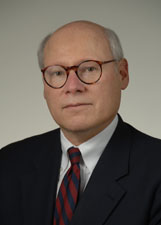
|
Dr. Paul Kimmel, senior advisor for the Division of Kidney, Urologic, and Hematologic Diseases’ Clinical Acute Kidney Injury, Kidney Translational Genetics, and Kidney HIV/AIDS programs, was awarded a Mastership from the American College of Physicians (ACP) in April. The award is earned for excellence and significance in his field, as well as personal character, positions of honor, and contributions towards furthering the purposes of the ACP. |
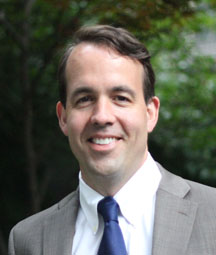
|
NIDDK grantee Dr. Peter P. Reese, an assistant professor of medicine and epidemiology at the University of Pennsylvania was awarded the Presidential Early Career Awards for Scientists and Engineers, the highest honor bestowed by the U.S. government on science and engineering professionals in the early stages of their independent research careers for his innovative work on ethical approaches to expanding access to organ transplantation.
|

|
NIDDK grantee Dr. Georgios Skiniotis, a biological sciences scholar and research assistant professor at the University of Michigan, was awarded the Presidential Early Career Awards for Scientists and Engineers, the highest honor bestowed by the U.S. government on science and engineering professionals in the early stages of their independent research careers for his studies on the structure and function of signaling cell-surface receptors. |
Welcome
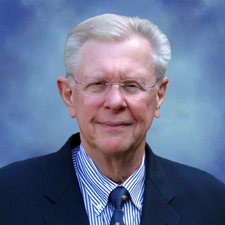
|
Dr. Dana Andersen joined the NIDDK Division of Digestive Diseases and Nutrition in June as director of the Clinical Studies program. He was previously vice chairman of the Department of Surgery and Surgeon-in-Chief at the Johns Hopkins Bayview Medical Center in Baltimore. He has served as a professor at SUNY Health Science Center, the University of Chicago, Yale University, and the University of Massachusetts, where he was Chairman of the Department of Surgery. Andersen is also co-editor of “Schwartz’s Principles of Surgery.” He brings to NIDDK expertise in areas including diseases of the pancreas and bariatric surgery.
|

|
Dr. Tamara Bavendam will join the NIDDK Division of Kidney, Urologic, and Hematologic Diseases in October as senior scientific advisor for Women's Urologic Health. For 25 years, she has performed clinical research in different areas of urology including urinary incontinence, lower urinary tract symptoms, overactive bladder, and interstitial cystitis, including overseeing several large multi-center randomized clinical trials. Since 2002, Bavendam served as a medical director for Pfizer. In 2008, she was appointed senior medical director in the Global Medical division. Among many publications and honors, she has been cited as a Best Doctor in America. |
A Fond Farewell

|
Dr. Paul Eggers, director of Kidney and Urology Epidemiology in NIDDK’s Division of Kidney, Urologic, and Hematologic Diseases, will retire in January 2013 after 36 years of federal service, including 12 at the NIDDK. Eggers has managed several large-scale epidemiological studies for NIDDK, including the United States Renal Data System (USRDS), the Urologic Diseases in America (UDA) project, the completed Boston Area Community Health Study and the Data Center for the NIDDK Repository. Beginning next year, he will continue to oversee the UDA and USRDS on a part-time basis. |
In Memoriam

|
Dr. William A. Hagins, chief of the Section of Membrane Biophysics in NIDDK's Laboratory of Chemical Physics upon his retirement in 2007, died on June 6. Dr. Hagins and colleagues made the seminal discovery of the dark current in photoreceptors. This finding became central to understanding how the visual cells worked and led to knowledge of the importance of reattaching a detached retina as soon as possible for continued use. A Fulbright Fellow, he’d also served in the U.S. Navy as a Research Medical Officer. He joined NIDDK’s Laboratory of Physical Biology in 1958, doing independent research in the Section of Photobiology, headed by Dr. Frederick Sumner Brackett. Dr. Hagins was a mentor to many, particularly through his work with the Brackett Foundation, which he founded and funded himself.
|
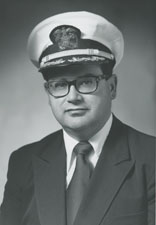
|
Dr. Leonard Kohn, a former chief of the NIDDK intramural Section on Biochemistry of Cell Regulation, died on April 18, 2012. He spent 36 years at NIH, and among his many achievements in thyroid research were his pioneering studies establishing that insulin/insulin growth factor 1 was critical to the synthesis of thyroglobulin and the action of thyrotropin and collaborating to discover and clone FRTL5 cells, the patents and assays for which were the basis for the first reproducible clinical assay for thyroid-stimulating immunoglobulin. His work encompassed more than 400 scientific papers and 13 patents. He had also served as a captain, senior surgeon, and medical director in the U.S. Public Health Service, retiring in 2000.
|
The next edition of the NIDDK Director’s Update will be online at www.directorsupdate.niddk.nih.gov in December.
Submission information: The Director’s Update is published in March, May, September, and December. To submit an item for the next edition, please contact Editor Amy F. Reiter at reiteraf@niddk.nih.gov. Items must be submitted six weeks before the month of publication to be considered for the next issue.
Subscription information: To subscribe to the NIDDK Director’s Update, go to www.directorsupdate.niddk.nih.gov. The subscription box is near the top right of the page.
Page last updated: September 18, 2012